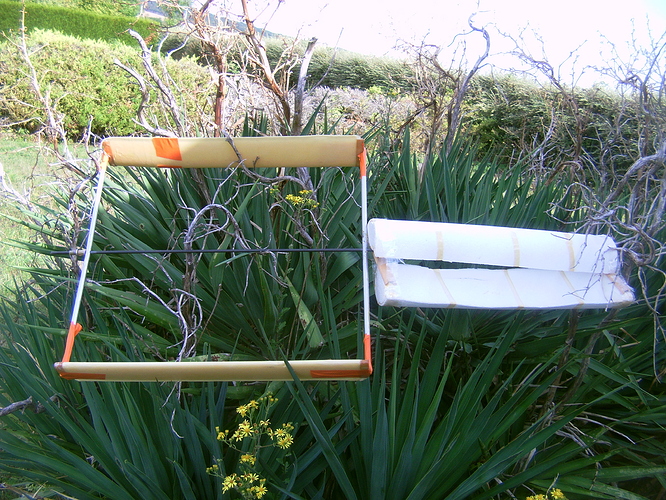On my previous post I spoke about a 0.5 m x 0.5 m Darrieus rotor with a 0.27 m x 0.5 m Savonius rotor on a side, and a 0.5m x 0.5 m cylinder on the other side.
Unlike a Magnus rotor (and in some way a Savonius rotor due to its Magnus effect) the Darrieus rotor does not need a high aspect ratio.
Theoretically the spin ratio of a Magnus rotor can go with the TSR of any device assuring its rotation. Practically (and according to my rough experiments) exceeding a value of 1 is difficult without motors, leading to a higher diameter of an efficient wind turbine in regard to the diameter of the driven cylinder.
On the photo I attach it is the same Darrieus rotor (0.5 m x 0.5 m) and with a smaller (0.17 m (instead of 0.27 m) x 0.5 m) poly Savonius rotor in the right to allow a better understanding. In the left there was a 0.27 m x 0.5 m cylinder.
As the TSR of my Darrieus rotor was rather low, between 1 and 2 at the best, the proportions between rotors can be too approximative.
However the Darrieus rotor adds drag, and has no lift unlike the Savonius rotor at least with the following dimensions I experimented:
-
a (0.27 m x 0.5 m) Savonius rotor alone leads to 35° elevation angle;
-
(0.27 m x 0.5 m) Savonius + cylinder rotors lead to 40° elevation angle;
-
the same cylinder + (0.5 m x 0.5 m) Darrieus + the same Savonius rotors lead to 10° elevation angle.
In fact the Darrieus rotor(s) could fly but with longer Magnus rotor(s) or/and Savonius rotor(s) or/and Sharp rotor. In the other hand the Darrieus rotor is more efficient than the Savonius rotor for electricity production: an appropriate balancing between these rotors could be studied, comprising their respective diameters and spans.
